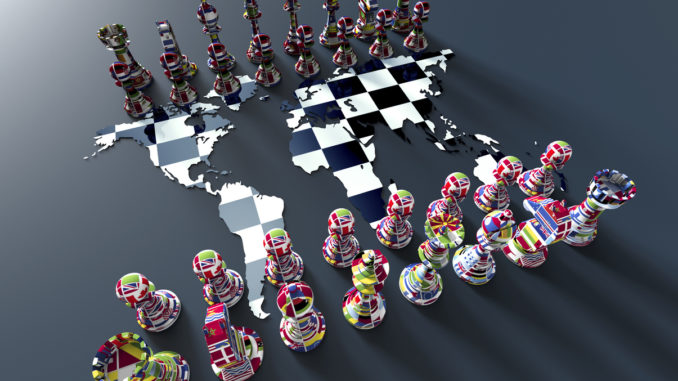
Courtesy of Financial Planner Garry Kachkovsky:
With all the current geopolitical risks in the world, one may wonder how such events could affect the markets. The current headlines often reference the growing conflict with North Korea, Syria, a renewed Cold War with Russia, Brexit, ISIS, foreign elections, and political battles here at home. While no one has a crystal ball, it may help to look at history as a guide. Surprisingly, stocks have held up well when the U.S. and other countries have been in far worse shape than they are now.
Ben Carslon from Bloomberg writes, “In the six months following the onset of World War I in 1914, the Dow dropped more than 30 percent. But in the following year, it rose more than 88 percent, which remains the highest annual return on record for the Dow Jones Industrial Average. In fact, from the start of the war in 1914 until it ended in late 1918, the Dow was up more than 43 percent in total, or around 8.7 percent annually.
Hitler invaded Poland on Sept. 1, 1939, which began World War II. When the market opened on Sept. 5, the Dow actually rose almost 10 percent in a single day. When the attack on the U.S. naval base at Pearl Harbor occurred in early December 1941, stocks opened up the following Monday down 2.9 percent, but it only took a month to regain those losses. From the start of WWII in 1939 until it ended in late 1945, the Dow was up a total of 50 percent, more than 7 percent per year.
The Korean War began in the summer of 1950 when North Korea invaded the South. That conflict ended in the summer of 1953. In that time, the Dow was up an annualized 16 percent, or almost 60 percent in total. In the next decade, U.S. troops were sent to Vietnam in March of 1965. The Dow would finish the remainder of that year up almost 10 percent. By the time the last of the U.S. troops was pulled out of Vietnam in 1973, the stock market was up a total of almost 43 percent, or just under 5 percent per year.
The Cuban Missile Crisis had the world on the brink of nuclear war in October of 1962. The confrontation lasted 13 days from Oct. 16, 1962, to Oct. 28. In that two-week period the Dow remained surprisingly calm, losing just 1.2 percent. For the remainder of that year the Dow would gain more than 10 percent. President John F. Kennedy was assassinated a little more than a year later in Dallas. The market opened up 4.5 percent the day after. Stocks finished up the following year, 1964, more than 15 percent.”
While there is no road map in trying to predict geopolitical events, trying to predict how the markets will respond is even harder. Thus, making sweeping financial decisions based on international conflicts may make us feel better, but may not make us better off. We encourage investors to measure the success of their financial plans based on steady progress toward their goals, not the short-term returns of the markets. If you have any questions, give Garry a call at 858-450-9711 or email at garry@kachkovskyandfisher.com.
Kachkovsky & Fisher is a Registered Investment Advisory Firm. This information is general in nature, is not a complete statement of all information necessary for making an investment decision, and is not a recommendation or a solicitation to buy or sell any security. Investments and strategies mentioned may not be suitable for all investors. Past performance may not be indicative of future results. Investors should consider the investment objectives, risks, charges and expenses associated with savings plans before investing.
Editor’s note:
This is sponsored content, purchased by the author, and reflects the author’s views. It may not reflect the views of UCCA or University City News. Sponsored content must conform to UCCA’s Bylaws. Publication does not constitute an endorsement. For more information about sponsored content, contact us at https://www.universitycitynews.org/contact-us-or-volunteer-in-uc/


 Please note: Information and advertising items included for publication in our print newsletter or on our websites or shared at our community meetings do not constitute an endorsement by the University City Community Association (UCCA) organization or its board members.
Please note: Information and advertising items included for publication in our print newsletter or on our websites or shared at our community meetings do not constitute an endorsement by the University City Community Association (UCCA) organization or its board members.
